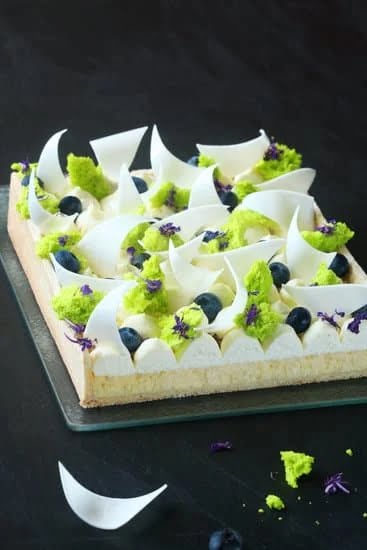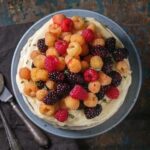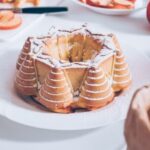Cake decorating is not just about making a cake look beautiful. It is an art form that allows bakers to showcase their creativity and express themselves through intricate designs, colors, and themes. Whether you’re a novice or an experienced baker, the world of cake decorating offers endless possibilities for self-expression and innovation.
The excitement of creating a visually stunning cake that tastes as good as it looks is what makes cake decorating such an important aspect of the baking world. From simple, elegant designs to elaborate masterpieces, the art of cake decorating never ceases to inspire and amaze. Whether it’s a birthday, wedding, or any special occasion, a beautifully decorated cake can elevate the entire event.
In this article, we will explore the essential tools for cake decorating, provide tips for choosing the right cake and frosting combination, delve into basic and advanced cake decorating techniques, discuss how to create unique themes and designs, troubleshoot common cake decorating problems, and share valuable resources for inspiration. So let’s dive into the wonderful world of cake decorating and unleash your creativity.
The Essential Tools for Cake Decorating
When it comes to cake decorating, having the right tools and equipment is essential for creating beautiful and professional-looking cakes. One of the most important tools for cake decorating is a turntable, which allows you to easily rotate the cake as you work, ensuring even frosting application and smooth decorations.
Piping bags and various tips are also crucial for creating decorative borders, lettering, and intricate designs. Additionally, offset spatulas are useful for spreading frosting and smoothing out surfaces, while a bench scraper helps achieve sharp edges and a clean finish.
Another essential tool for cake decorating is a pastry brush, which can be used to apply simple syrups or flavored extracts to the cake layers before frosting, adding moisture and flavor. A cake leveler or serrated knife is necessary for leveling cakes before stacking them, while fondant smoothers help create flawless finishes when working with fondant.
And let’s not forget about the importance of a good quality rotating cake stand, which makes it easier to access all sides of the cake as you decorate.
Understanding how to use each tool effectively is key to achieving professional results in cake decorating. Whether you are a beginner or an experienced baker, having the right tools can make all the difference in your ability to create stunning and impressive cakes. Investing in high-quality tools and equipment will not only improve your skills but also make the process of decorating more enjoyable and efficient.
As you embark on your journey of learning how to cake decorate, take the time to familiarize yourself with these essential tools and their usage. Knowing how to utilize each tool properly will set you up for success in creating beautiful cakes that will impress your friends, family, or clients. With the right tools in hand, along with some creativity and dedication, you’ll be well on your way to mastering the art of cake decorating.
Choosing the Right Cake and Frosting
When it comes to cake decorating, choosing the right cake and frosting is crucial for achieving the desired result. The type of cake and frosting you choose can greatly impact the overall appearance and taste of your decorated creation.
Types of Cakes
- Butter Cake: A versatile and classic choice that pairs well with a variety of flavors
- Sponge Cake: Light and airy, perfect for layered cakes and absorbing syrups or liqueurs
- Chocolate Cake: Rich and indulgent, ideal for those who love chocolate-flavored desserts
- Carrot Cake: Moist and flavorful, a great option for adding texture and dimension to your decoration
Types of Frostings
- Buttercream Frosting: Versatile, easy to work with, and can be flavored in various ways
- Cream Cheese Frosting: Tangy and creamy, pairs well with carrot or red velvet cakes
- Ganache: Smooth, glossy, and decadent – perfect for creating a polished finish on cakes
- Fondant: Ideal for creating intricate designs or covering cakes with a smooth, flawless surface
When selecting the right cake and frosting combination for decorating, consider the flavors that complement each other. For example, a light sponge cake may pair well with a fluffy buttercream frosting, while a rich chocolate cake could be enhanced by a luscious ganache. It’s important to also consider the stability of the cake when choosing frostings – delicate cakes may require a more stable frosting to prevent crumbling or collapsing during decoration.
By understanding how different types of cakes and frostings work together, you can enhance your cake decorating skills and create stunning edible works of art that not only look impressive but also taste delicious.
Basic Cake Decorating Techniques
When it comes to learning how to cake decorate, mastering the basic techniques is essential. Whether you’re a beginner or looking to enhance your skills, understanding these foundational methods will set you on the right path to creating beautifully decorated cakes. Here are some key techniques to get you started:
- Piping: Piping is the process of using a pastry bag and various tips to apply frosting in decorative patterns onto a cake. This can include borders, writing, and intricate designs.
- Flooding: Flooding involves using a thinner consistency of icing to cover the surface of the cake smoothly. This is often used as a base for more detailed decorations.
- Smoothing: Achieving a perfectly smooth finish on a cake can be challenging, but it is an important skill for any cake decorator. Utilizing tools such as offset spatulas and bench scrapers can help achieve that flawless look.
These basic techniques are fundamental building blocks for more advanced decorating methods. Practice these skills with different designs and colors to build your confidence and expertise in cake decorating.
Remember, patience and practice are key when learning how to cake decorate. Don’t be discouraged if your first attempts aren’t perfect – keep experimenting and refining your techniques to create stunning cakes that will impress friends, family, and clients alike.
Advanced Cake Decorating Techniques
Fondant Work
One advanced cake decorating technique that can take your cakes to the next level is working with fondant. Fondant allows for smooth, flawless finishes and intricate designs. To start, roll out the fondant using a rolling pin and gently drape it over your frosted cake. Smooth out any air bubbles or wrinkles with a fondant smoother tool. Add additional decorations like flowers, patterns, or 3D figures using different fondant molds and cutters.
Sugar Flowers
Another stunning technique to learn in cake decorating is creating delicate sugar flowers. These edible works of art can be made from gum paste or modeling chocolate and require patience and attention to detail. Begin by shaping the petals of the flower using specialized flower cutters and tools. Let the petals dry before assembling them into a beautiful flower. Dust with edible colors to add depth and realism.
Edible Painting
For those looking to truly showcase their artistic skills, edible painting is an exciting technique to explore in cake decorating. Using food-safe paints or gel food colors mixed with clear alcohol like vodka, you can paint intricate designs directly onto your cake or onto fondant accents. Start with simple designs and gradually work your way up to more complex paintings as you gain confidence in your skills.
Learning these advanced cake decorating techniques takes time, practice, and dedication, but the results are well worth the effort. Experimenting with different tools, materials, and methods will help you develop your own unique style as a cake decorator. Keep exploring new techniques and challenging yourself to create breathtaking edible works of art.
Creating Themes and Designs
When it comes to cake decorating, the possibilities for themes and designs are endless. Whether you’re making a birthday cake, a wedding cake, or just a special treat for a loved one, choosing the right theme and design can make your creation truly memorable. In this section, we’ll explore how to brainstorm and execute different themes for cake decorating, as well as provide some ideas for creating unique and eye-catching designs.
Brainstorming Themes
The first step in creating a themed cake is deciding on the overall concept. This could be based on the recipient’s hobbies or interests, the occasion of the celebration, or simply something whimsical and fun. Consider factors such as colors, shapes, and motifs that can tie into your chosen theme. For example, if you’re decorating a cake for a nature lover, you might consider incorporating elements like flowers, leaves, or woodland creatures.
Design Execution
Once you’ve settled on a theme, it’s time to bring your vision to life. Depending on the complexity of your design, you may want to create sketches or use digital tools to plan out your decoration strategy.
Think about how different elements will fit together on the cake – from figurines and edible images to decorative piping and fondant accents. It’s important to pay attention to detail and precision during this stage so that your finished product looks polished and professional.
Unique Design Ideas
For those looking to really make an impression with their themed cakes, there are plenty of unique design ideas to explore. For example, you might try creating a three-dimensional sculpted cake that resembles an object related to your theme (such as a sports ball or an animal).
Another option is using innovative techniques like edible printing or airbrushing to add intricate details and vibrant colors. Don’t be afraid to think outside the box when it comes to themed cake designs – sometimes the most unexpected ideas turn out to be the most striking.
Troubleshooting Common Cake Decorating Problems
When you’re learning how to cake decorate, it’s important to be prepared for common decorating problems that may arise during the process. One of the most common issues is dealing with icing consistency. If your icing is too thick, it can be difficult to pipe and may not spread smoothly.
On the other hand, if your icing is too thin, it can easily run off the sides of the cake. To troubleshoot this problem, make sure to follow the recipe measurements carefully and adjust as needed to achieve the desired consistency.
Another issue that cake decorators often face is color bleeding. This occurs when different colored icings or decorations bleed into each other, creating a messy and unappealing look. To avoid color bleeding, make sure that your cake and decorations are completely cooled before adding any additional layers of frosting or designs. Additionally, consider using gel food coloring instead of liquid food coloring for more precise and vibrant colors.
Cake bulging is also a common problem that can occur after assembling layers of a cake with filling. This happens when the filling pushes against the outer layers of the cake, causing them to bulge outwards. To prevent this issue, make sure to properly level and fill each layer of cake, then allow the assembled cake to settle before applying a final layer of frosting.
| Cake Decorating Problem | Troubleshooting Tip |
|---|---|
| Icing Consistency | Follow recipe measurements carefully and adjust as needed |
| Color Bleeding | Ensure cake and decorations are completely cooled before adding additional layers; use gel food coloring instead of liquid |
| Cake Bulging | Properly level and fill each layer of cake; allow assembled cake to settle before applying final layer of frosting |
Resources for Cake Decorating Inspiration
Once you have mastered the essential tools, techniques, and cake selection, it’s time to explore resources that will inspire your cake decorating journey. The internet is a treasure trove of information and inspiration, and there are countless websites and social media accounts dedicated to cake decorating.
One popular website for cake decorating inspiration is Pinterest, where you can browse through thousands of stunning cake designs, tutorials, and ideas. Instagram is also a great platform to follow professional cake decorators and get a glimpse into their creative process. Many decorators share behind-the-scenes looks at their cakes and offer valuable tips and tricks.
In addition to online resources, there are plenty of books dedicated to the art of cake decorating. “The Cake Bible” by Rose Levy Beranbaum is a classic resource for both beginners and seasoned decorators. It covers everything from basic techniques to advanced skills, making it a valuable addition to any baker’s library.
Lastly, don’t underestimate the power of in-person classes and workshops. Many local bakeries or culinary schools offer courses in cake decorating taught by experienced professionals. These hands-on experiences can provide invaluable knowledge and guidance as you continue to refine your skills.
| Resource | Description |
|---|---|
| A platform with thousands of stunning cake designs, tutorials, and ideas | |
| A great platform to follow professional cake decorators for tips and tricks | |
| “The Cake Bible” by Rose Levy Beranbaum | A classic resource covering basic techniques to advanced skills for both beginners and seasoned decorators. |
Conclusion
In conclusion, cake decorating is a versatile and exciting art form that allows bakers to express their creativity and impress their friends and family with beautiful and delicious creations. From basic techniques like piping and flooding to more advanced skills like fondant work and edible painting, there are endless possibilities for creating stunning cakes. By mastering the essential tools, choosing the right cake and frosting, and experimenting with different themes and designs, anyone can become a skilled cake decorator.
Remember, the key to mastering the art of cake decorating is practice, patience, and a willingness to learn. Don’t be afraid to make mistakes or try new techniques – that’s how you’ll improve your skills and develop your own unique style. Whether you’re creating a simple birthday cake or an elaborate wedding masterpiece, embracing the journey of cake decorating will lead you to new levels of creativity and satisfaction.
So keep exploring different resources for inspiration, continue learning from tutorials, and most importantly, have fun with it. With dedication and passion, you can become a master of cake decorating and create truly special confections that will be cherished by all who see (and taste) them. Now go forth and let your imagination run wild as you discover how to cake decorate.
Frequently Asked Questions
What Is the Best Way to Decorate a Cake?
The best way to decorate a cake is to start with a smooth layer of icing or frosting. Then, you can use piping bags, fondant, edible decorations, and other tools to create beautiful designs on the cake.
What Are the Steps in Decorating a Cake?
Decorating a cake involves several steps. First, you need to prepare the cake by letting it cool completely. Then, apply a crumb coat of frosting before adding the final layer. Next, use piping bags and various tips to create designs and patterns on the cake. Finally, add any edible decorations like flowers or sprinkles to complete the look.
What Are the 7 Different Cake Decorating Techniques?
There are seven different cake decorating techniques that bakers often use. These include piping (using different tips for various designs), fondant decoration (covering the cake with rolled fondant and adding accents), buttercream flowers (creating intricate floral designs with buttercream icing), stenciling (using stencils to airbrush or dust patterns onto the cake), hand-painted details (painting edible designs directly onto the cake), gum paste flowers (making delicate flowers and other shapes out of gum paste), and royal icing details (using royal icing for intricate lacework or detailed borders).
Each technique offers its own unique way to decorate a cake and allows for creativity in design.

Welcome to our cake decorating blog! My name is Destiny Flores, and I am the proud owner of a cake decorating business named Cake Karma. Our mission is to provide delicious, beautiful cakes for all occasions. We specialize in creating custom cakes that are tailored specifically to each customer’s individual needs and tastes.





